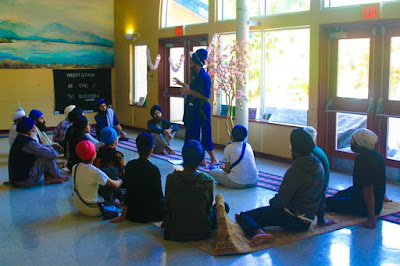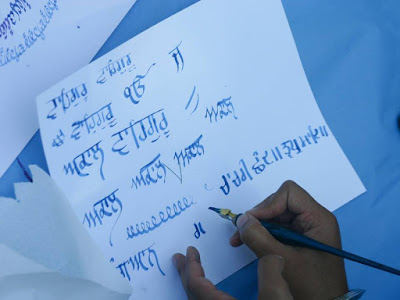
Khalsa
Camp BC (Canada) took place from 20th to 25th August 2015. This was
the seventh successful year of Khalsa Camp BC. It was very impressive to see how the
camp has grown and developed over the years. The camp was well
organised and the atmosphere was inspirational! It was great to have
darshan of so many Gursikhs.
This years camp had a range of speakers for talks and workshops which included Bhai Tarsem Singh (UK), Bhai Navreet Singh (UK), Bhenji Satnam Kaur (UK), and Bhai Dalvinder Singh (USA). The camp had a great atmosphere and great to see so many new faces in the Sangat.
This years camp had a range of speakers for talks and workshops which included Bhai Tarsem Singh (UK), Bhai Navreet Singh (UK), Bhenji Satnam Kaur (UK), and Bhai Dalvinder Singh (USA). The camp had a great atmosphere and great to see so many new faces in the Sangat.
Some of the photos from the camp (taken from Khalsa Camp BC Facebook):
Darbaar Sahib
Guru Jee's Darbaar

Aasa Ki Vaar Keertan by Bhai Tarsem Singh
Bhai Navreet Singh's time capsule workshop
Caligraphy workshop
Lecture on life after death and Gurmat

Bhenji Satnam Kaur's lecture on Gurmat and Health. A really insightful lecture!
Inspirational and motivational lecture by Bhai Tarsem Singh

Gursikh Pyaare

Bhai Navreet Singh's workshop on Panj Chor.
Evening Keertan Darbaar
Sukhaasan Seva
Questions and answers session
When you know it is bedtime but organizers insist camp goes on!
Don't know what I said in the questions and answers. It made Bhai Tarsem Singh Ji laugh!

Keertan on the lake side
Rehraas Sahib at the lake side

Amrit Kaur doing Keertan during the Rainsbaaee

Looks like I am being strangled! When receiving a Siropa becomes life threatening! (Note: No one was harmed in taking this photograph)
When the stage is hijacked and speakers told to go home!






















































